
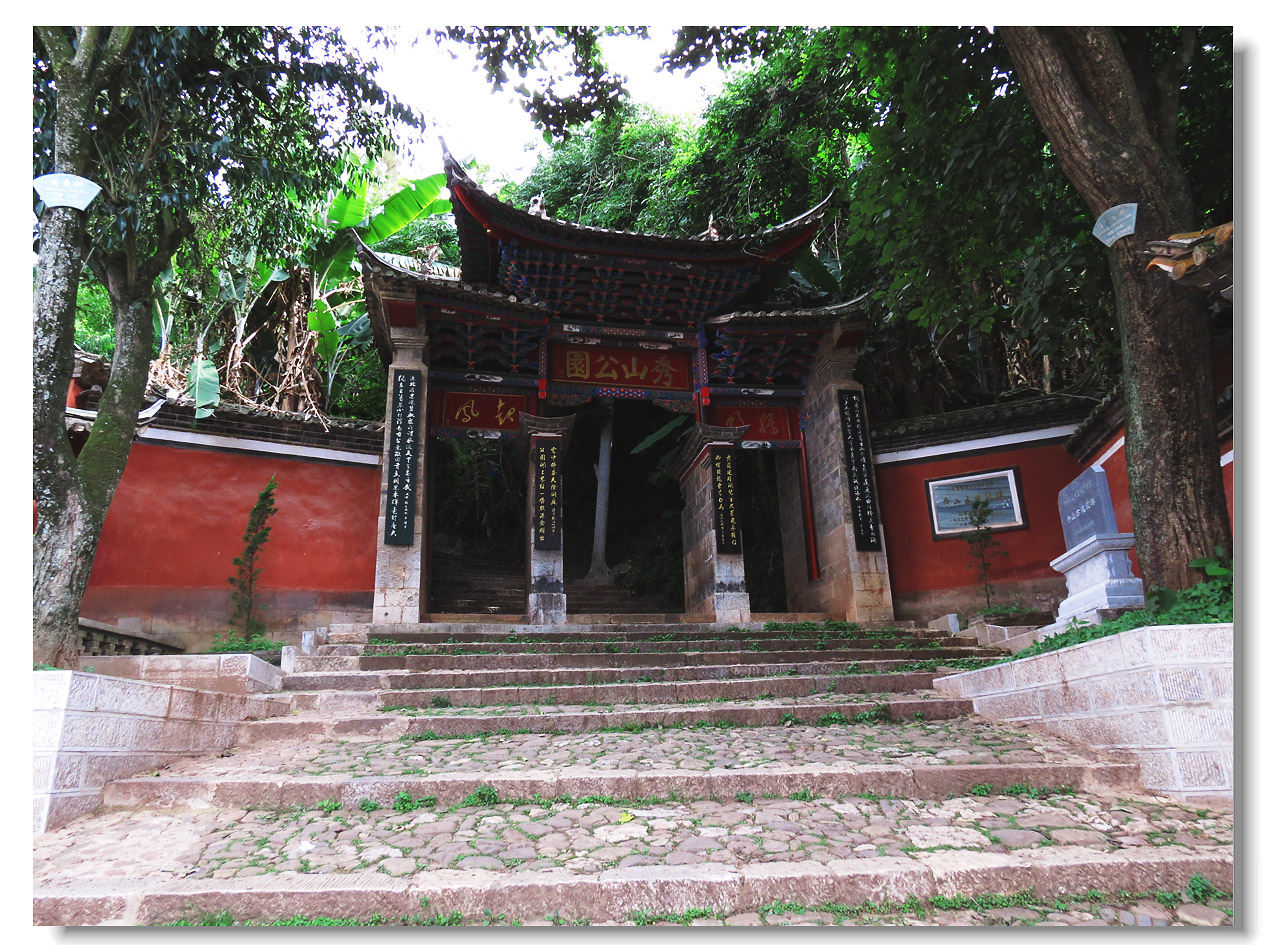












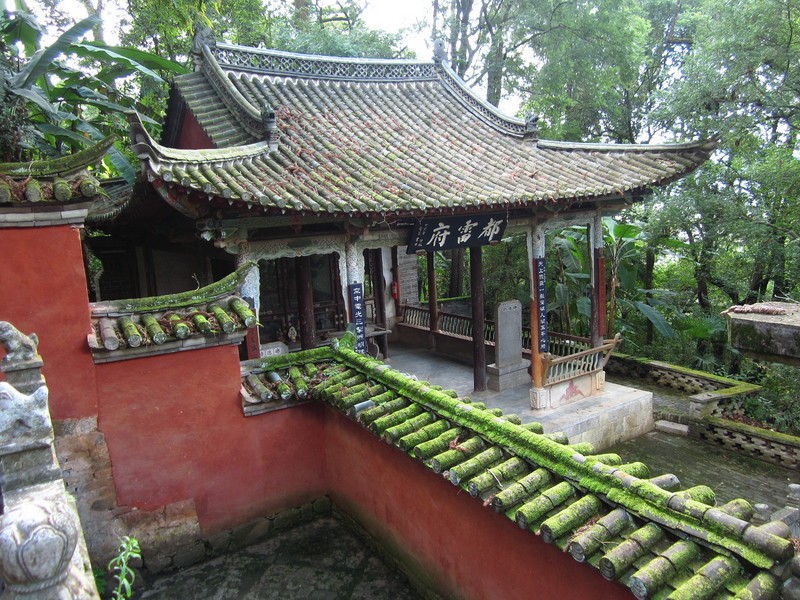








Chinese Name:秀山公园
Key Words:One of the Four Famous Mountains in Yunnan
Location:Tonghai County seat is situated at the foot of mountains and besides a lake. Xiushan Mountain is closely to the south
Overview:
The landscape here looks like a beautiful picture. In the front, Qilu Lake has shining glistening lights of waves. In the middle, the houses in the county look dignified. And Xiushan Moutain behind appears green. It is characterized South Yangtze River scene.

Xiushan park is a large temple park in the style of China's famous Holy Mountains, set on Xiushan mountain, overlooking Tonghai city and Qilu lake. Its total lack of cable cars, souvenir stalls and tourists make this park easily one of the most pleasant and laid- back in China. Those relatively few monks and pilgrims there are, earnestly pray and leave offerings for the gods, simple yet beautiful gifts of flowers, rice, candles and incense. Meanwhile, the locals sip tea and play Mah-jong, Chinese chess and cards in the courtyards of the temples. Minimalist Bonsai gardens and ancient, gnarled trees of a variety of species, such as camellias, cypresses or firs, many of them held up by metal bars, add beauty and a kind of timeless charm to the place. Besides trees, dragons are the protagonists of the park, either wrapping their bodies around pillars, cavorting above doorways, or splashing in fountains. All in all, it's a lush and peaceful place.foreigner visitors still attract the curiosity of the locals in these parts.
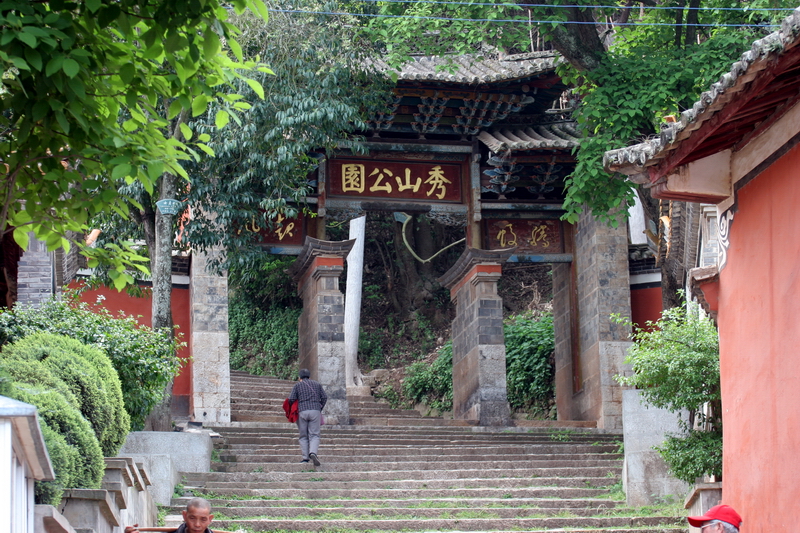
In Xiushan Mountain, the trees are luxuriant and well-spaced. It is a deep and quiet place with static temperature. You can see various flowers on the tree in spring, moving shadows of the tree in summer, whistling red leaves in fall and peculiar branches in winter. The mountain has different trees in different areas. At the north foot of the mountain, the green bamboo forests look like curtains. Walking along the rough passage, the light is quite dim even in the daytime. On the northwest mountainside, the green pines cover the sky and make it a extremely quiet place. On the west side, the mountain is covered by jungle and brushwood, which is an untraversed, peaceful and isolated region. The cedars and chestnuts are distributed in the east of the mountain, where the trees are so green and luxuriant that it is a best place for living in seclusion or strolling along. On the south of the mountain, the old and young pines look like moving green covers. The sound is ceaseless and you can find the amusement of listening to the sounds tastefully.
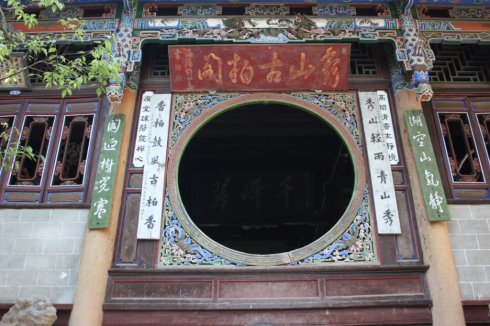

Highlights
Puguang Temple
The second oldest temple in Xiushan Mountain is Puguang Temple on the east mountainside. It is said that construction of this temple was started in the Five Dynasties and extended in the Daolong Era, the eleventh Jiyou year in the Dali State, namely, the ninth year of Lizong Chun Era in the Song Dynasty (1249 AD). The steles of the Yuan Dynasty in this temple have a long history and are of antique flavor. The temple enshrines and worships the magical monk Li Panfu. It is said that he came from Xinxing State (Yuxi) and shaved his head and became a monk in Tonghai. When he found that the water of the lakes in Tonghai had always inundated the farmland and the farm work had became harder, he started to dig holes to drain the water. After the lake water had fallen to other places, many fertile lands appear around the lake. People could enjoy a good and prosperous life then. So they build a temple here to commemorate him.
Yongjin Temple
Located on the peak of Xiushan Mountain, Yongjin Temple is a building of the largest scale and remotest time. The building of the temple is broad in scale and the palaces and halls are elegant and beautiful. There is a stone platform in front of the gate. Climbing on the stone and looking far to the Qilu Lake, you can see the glistening light of the waves, open and flat farmlands, as well as tall trees, which make you feel completely relaxed and joyful.

Towers and Pavilions
When Climbing up the mountain and looking far into the distance, a pavilion is necessary. All buildings on Xiushan Mountain face north to the lake. They are surrounded by several main temples. Haiyue Tower is built on the left and right sides of the Qingliang Platform. Tianjing Tower locates in front of Doutian Pavilion. Huanhe Tower is in the depth of the Land of Peach Blossoms, where a reputable man in Tonghai, Kan Zhenzhao had lived in seclusion. The Haiyue Tower is on the west side of Zhuguofu. In the courtyard, camellia and cheery bay send out sweet scent. During the moon set or the flowers blossom, you can climb up the tower and look in distance. The watery blue reaching far beyond the horizon and the waters and skies merge into one color. The scene and buildings in Xiushan Mountain are so unique that many men of literature and writing of past dynasties have written a great number of poems, plaques and couplets for her, which add to Xiushan Moutain’s elegance and nobleness, as well as literary grace and romance.

Seasonal features of plants
There are peach blossom, rhododendron, camellia, and torch lily in spring, chrysanthemum in autumn, magnolia in winter. Ancient and famous trees include cypress of Song Dynasty, taxodium of Yuan Dynasty, and camellia and magnolia of Ming Dynasty.

In the mountain hides 9 halls, 6 pavilions, 6 corridors, 4 chambers, 4 pagodas, 4 towers, 5 archways, 5 temples, and 13 pavilions, with more than 200 inscribed boards and 400 couplets in total.
Historic sites
Xiushan Mountain started its development in Han Dynasty, and experienced large-scale construction in Tang Dynasty. Over the dynasties of Song, Yuan, Ming, and Qing, seven ancient architectural groups had formed here with grandeur and various styles. In Ming Dynasty, it gained the same fame as Jinma Mountain in Kunming, Jizu Mountain in Binchuan, and Diancang Mountain in Dali, which were called “the four most famous mountains of Yunnan”. Numerous travelers and writers in history have left their records about Xiushan Mountain.
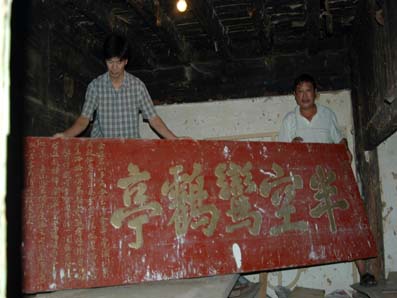
The Best Time to Visit Xiushan Mountain:
all year round,the scenery is amazingly charming.
Tours Including Xiushan Mountain:
17 Days Kunming Yuanyang Puer Xishuangbanna Bike Tour
Attractions Near Xiushan Mountain
Tonghai Confucius Temple is situated on the south of the town at the foot of Xiushan Mountain. The temple consists of a group of ancient architectures which are divided by a central axis and appear in layers with a combination of individual architectural bodies.
The old town in Tonghai began to appear in West Han Dynasty under the foot of Xiushan Mountain and the city was formed in Nanzhao period of Tang Dynasty. In Song and Yuan dynasties, castles were built here with adobe, which are called “old county” today. In Hongwu period of Ming Dynasty, due to the boom of commerce and trade, the old city no longer matched the needs for development and a new city was built with bricks below the old one, which came into the present structure.
Xingmeng Mongolian Autonomous Township in Tonghai County
Xingmeng Mongolia Nationality township is situated under the foot of Fenghuang Mountain and is the only dwelling area of Mongolia nationality in Yunnan.It has a history of more than a thousand years with unique ethnic culture.
Admission Fee:¥15
Opening Hours:8:00-17:00
Attraction
Transportation:Take regular bus from East Kunming Station to Tonghai County. The ticket costs 15 yuan. The distance from Kunming to Tonghai is about 138 km. The Xiushan Mountain is quite near to the downtown area. After arriving at Tonghai, Walk along Nanjie Street to the Xiushan Park.
Attraction Travel Tips:

You will only receive emails that you permitted upon submission and your email address will never be shared with any third parties without your express permission.
